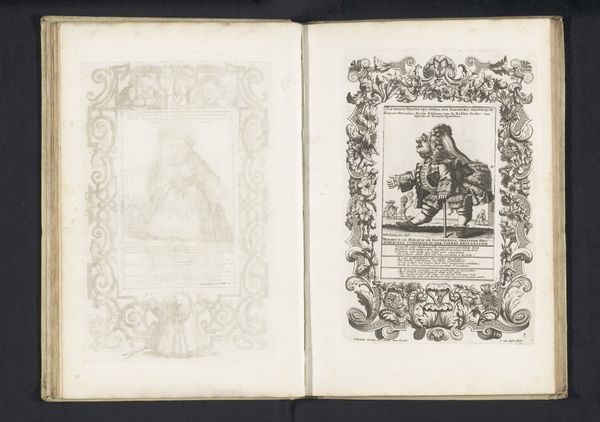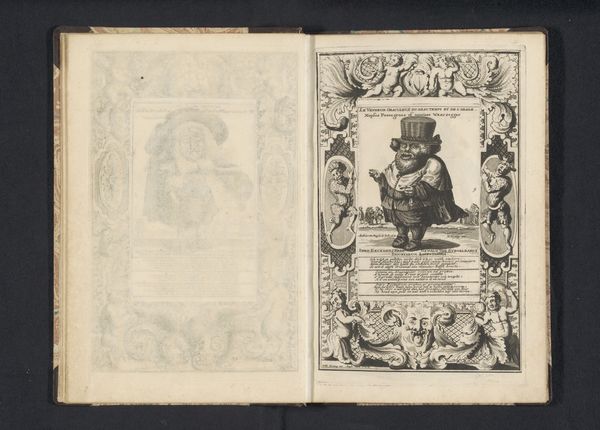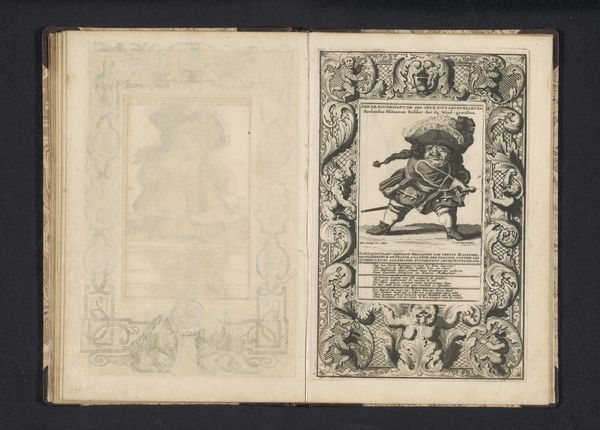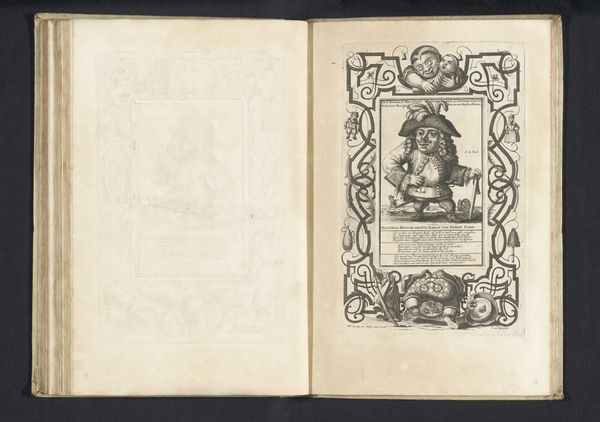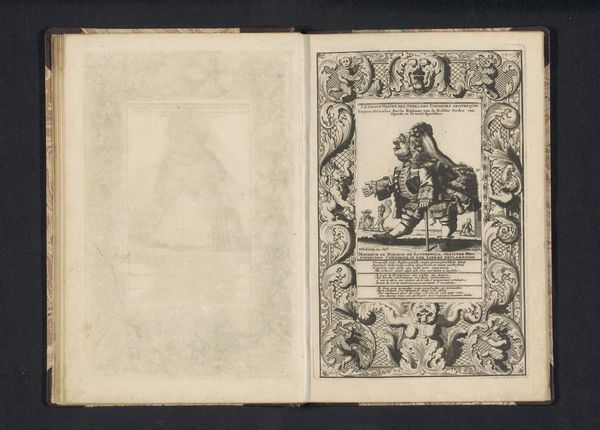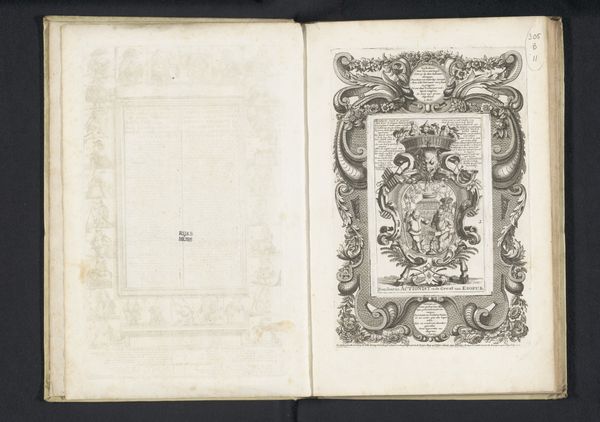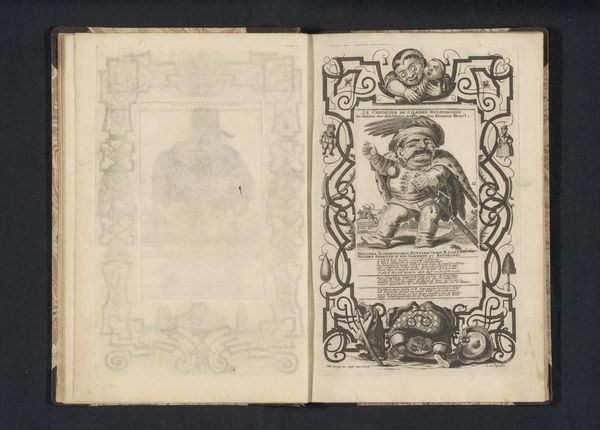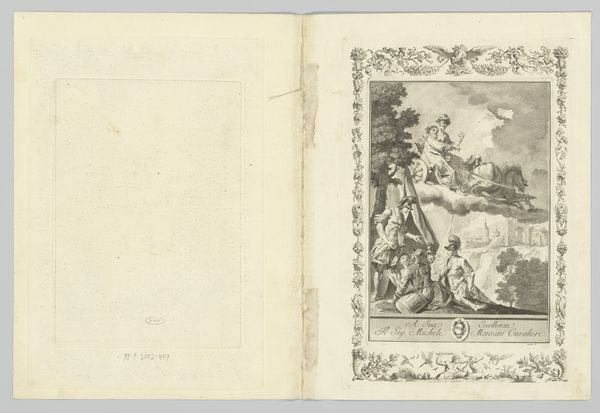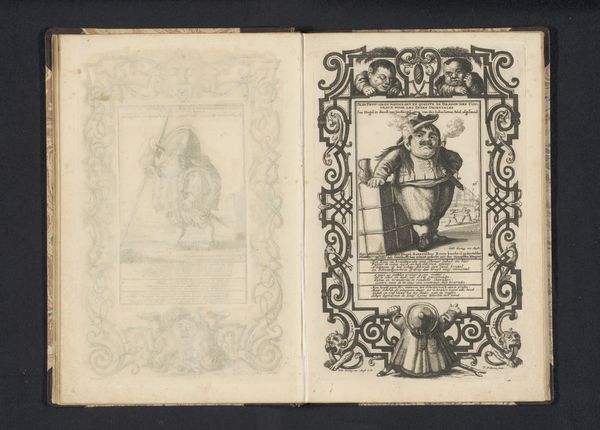
print, engraving
#
portrait
#
baroque
# print
#
caricature
#
old engraving style
#
hand drawn type
#
hand-drawn typeface
#
engraving
Dimensions: height 169 mm, width 105 mm, height 275 mm, width 175 mm
Copyright: Rijks Museum: Open Domain
Joost van Sassen made this print of ‘The dwarf Hans Breed-hoed van Plughaarheim’ in 1720. It belongs to a tradition of Dutch and German Renaissance prints that depicted people with dwarfism or other physical differences. But what was the public role of such imagery? The image creates meaning through visual codes that are both cruel and compassionate. On the one hand, the figure is mocked through caricature and the written text below. On the other hand, the ornate border, the formal pose, and the fashionable clothes lend him a certain dignity. There are social conditions that shape artistic production. The Dutch Republic in the 18th century was a society undergoing significant social and economic change. The expansion of the middle class and a developing print culture created a market for images that both entertained and reinforced social hierarchies. Understanding this print requires art historians to research such contextual factors. Only then can we reflect on the meaning of art as something contingent on its time.
Comments
No comments
Be the first to comment and join the conversation on the ultimate creative platform.


